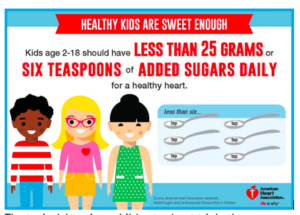Whether your child plays soccer or soft ball, good nutrition can make for better performance on and off the field. There are some basic rules for all kids who play sports and then some added bonus guidelines for different ages and sports.
Rule #1: Get at least 8 hours of sleep at night. To ensure peak performance and support healthy weight, making sure kids get enough sleep is vital. Making sure Kids are in bed without electronic devices or screens 8 to 9 hours before they need to get up the next morning is a good place to start.
Rule #2: Keep well hydrated. A good rule of thumb for School age kids is one-half cup (4 ounces) of fluid for each year of life. Need a Sports Drink? The best sports drink for kids is a high protein milk, such as cow’s milk or soy milk. Choosing chocolate milk adds extra potassium to regular milk. If your child sweats during games and practices, an eighth (1/8) teaspoon of salt in chocolate milk can help replace sodium lost through sweat.
Rule #3 Busy schedules get busier: During spring soccer session, I can remember driving all over Ohio and tossing dinner to my kids from the driver’s seat. To be sure that they got the nutritious food they needed, I kept a picnic basket in the boot of the Mini-van. Here are some picnic basket ideas for families!
To Go Foods:
Peanut butter to go packages
Almond butter to go packages
Hummus to go packages
Guacamole to go cups
Pita bread chips – mini bagels – whole grain crackers
Aldi teddy graham snack packs (lowest sugar brand)
Individual packages of Low sugar cereal (cherrios – raisin bran)
Raisin boxes
Dried cranberries boxes
Individual servings of nuts (for children older than 3 years of age)
Individual servings of celery, baby carrots, snap peas
Baggies of fruits: grapes / apples slices (soak apple slices in cranberry or orange juice over night to avoid browning)
Or make your own snacks:
Cereal mix recipe: 2 tablespoons chopped nuts, 2 tablespoons chopped dried fruit, ½ cup low sugar cereal such as Kix.
Granola bar recipe: ½ cup blended / chopped dates – ½ cup nut butter –1/2 cup honey – 1 cup toast rolled oats – ½ cup toasted chopped nuts and or coconut. Heat nut butter and honey over low heat until melted. Combine with remaining ingredients. Mix well. Cover pan with waxed paper or parchment paper. Press into shallow sheet pan (jelly roll pan)
Bake at 350° for 20 minutes. Cool and cut into bars.




